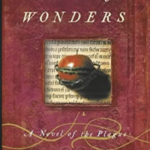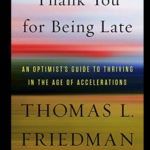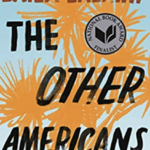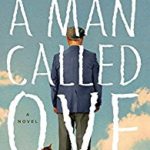February 15th, 2018 — 12:18am
Underground in Berlin: A Young Woman’s Extraordinary Tale of Survival in the Heart of Nazi Germany by Marie Jalowicz Simon (translated by Anthea Bell with a foreword and afterword by Hermann Simon)
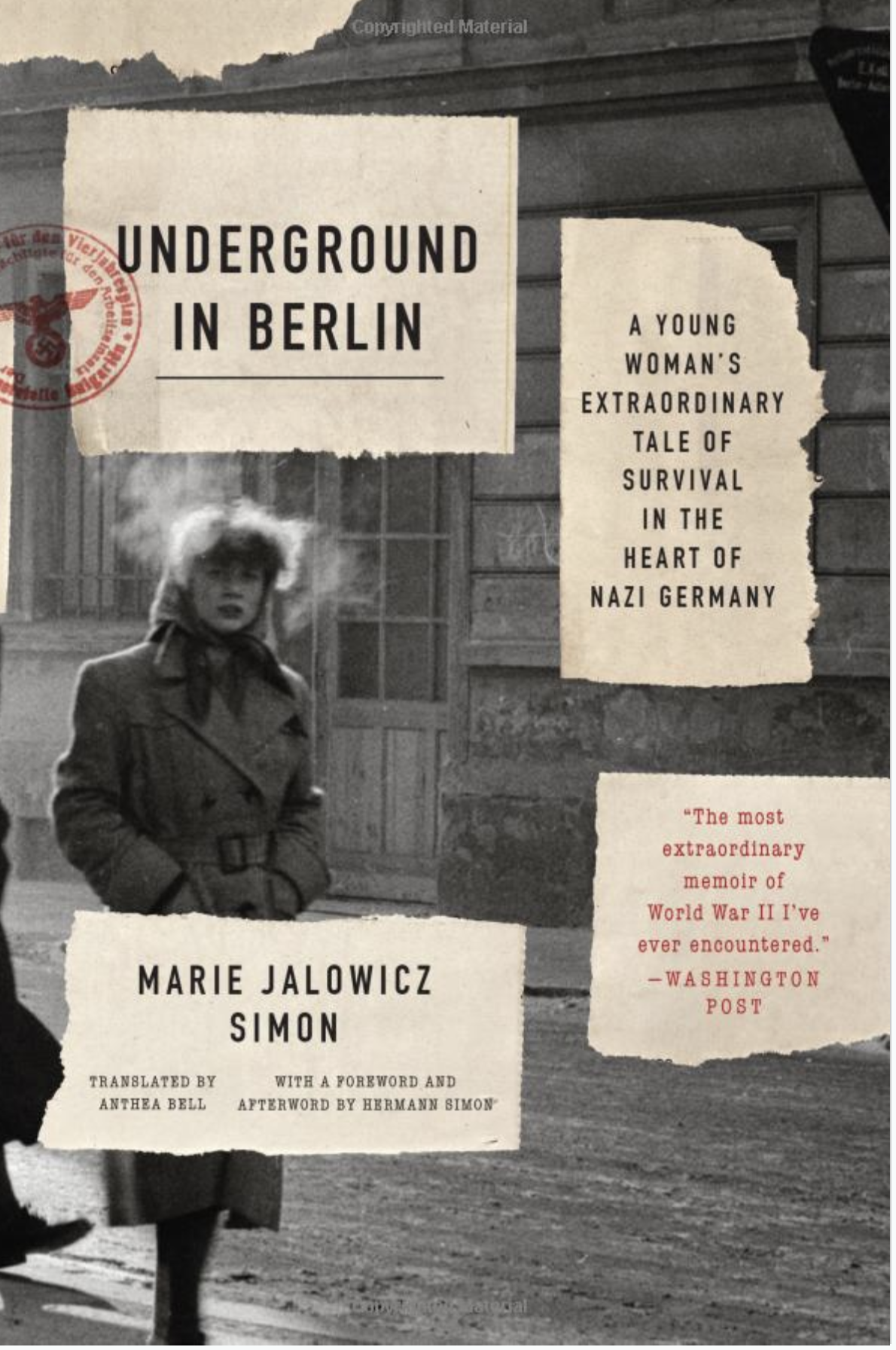
Hermann Simon knew his mother as a loving parent who was a Professor of Classical Antiquities at the Humboldt University of Berlin. He also knew that his mother survived World War II by staying and hiding most of the time in Berlin. During that period in Berlin, so she would not be discovered as a Jewish girl in her 20s and sent to a concentration camp. She rarely spoke about this experience and her son really didn’t know the details. Shortly before her death in 1998, he put a tape recorded in front of her and she agreed to tell her story.
Not only did Ms. Simon tell the story chronologically in vivid detail, but she also revealed her inner thoughts and feelings. She related how at first she wore the yellow Jewish star as was expected to be worn by all Jews in the city, although periodically she would hide it. She did the required work in a German factory making screws for war weapons. Then when her parents were “deported” and nobody knew exactly what their fate would be, she decided to “go to ground” which meant to go underground living in Germany. She hid her Jewish identity and found temporary lodging with non-Jewish friends. She would spend a few days or a week or two and then have to move on and try to find some other place to live.. At times, the circumstances was such that she had to give sexual favors and even got married for a short time in order to have a place to live. She had trouble getting food and most of the time she was in great hunger. Sometimes she had to sit in a wicker chair for hours at a time or sleep in the makeshift bed in the corner of somebody’s apartment who was risking their own lives by hiding her.
She was “underground” for about three years. She recalled not only the details of each phase of her hiding but painted a clear picture of the people she met and with whom she interacted. But most interesting was her ongoing recounting of her fears and feelings as she walked around the city or read books in an uncomfortable living arrangement with constant hunger. There’s no complicated plot or strongly unforgettable characters (other than Ms. Simon). We could appreciate the kindness of so many people who risked their lives to hide her. Her experience after the Russians liberated Berlin was also quite interesting.
We owe a debt of gratitude to Ms. Simon and her son for leaving the legacy of her experience as the young Jewish woman in Berlin during the war who “went to ground.” This book may not achieve the literary acclaim of some of the classic Holocaust books, but I still found it unforgettable. We all should be appreciative that the author and her son made the effort to preserve her story for future generations.
Please leave any comments below
To purchase a copy of this book on Amazon, please click here
Comment » | Uncategorized
December 25th, 2014 — 5:52pm
Unbroken by Laura Hillenbrand– I read this book and wrote this review prior to seeing the movie by the same name. I do plan to see it and will review it in FilmRap.net.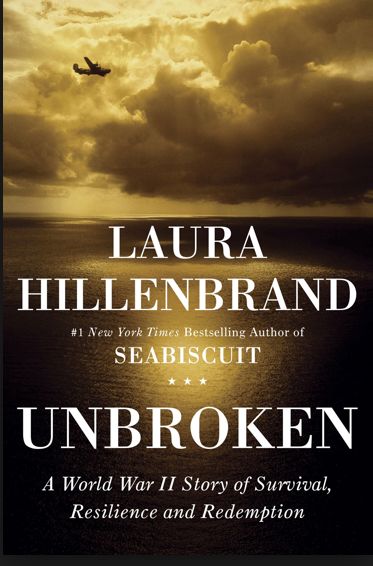 (click here to see review)
(click here to see review)
Louie Zampereini was an Italian-American boy from a poor family who was raised in Torrance, California. He was a rough and tumble kid who had a propensity for stealing things and getting into trouble. He was fast on his feet and ultimately developed into a record breaking track star who participated in the 1936 Olympics in Berlin, Germany. When World War II came about he signed up for the Army Air Force and became a bombardier. Early in the war his plane on a mission crash-landed in the Pacific Ocean where he and two other airman survived in rafts for 47 days as they drifted 2000 miles. During this time they battled starvation, dehydration, hungry sharks and storms as well as Japanese planes that strafed them with machinegun fire. If you think this was bad you should see what happened after they were rescued at sea…by the Japanese and made prisoners of war (although they were never treated according to the Geneva Convention rules for POWs). We see how things were absolutely terrible and how demeaning the treatment of American Prisoners was, ironically clearly much worse than the German Nazis reportedly dealt with their American captives. Louis was apparently treated much more savagely once he was recognized as an Olympic track star.
Being a member of the Silent Generation and having come of age in the decade following WWII, I grew up as a kid reading all sorts of stories and seeing all the movies about this war. Even now as an older guy I am still drawn to a book such as this one. I am sorry to say that reading about the awful treatment by the Japanese of the helpless American prisoners, my old negative prejudiced feelings about the Japanese people were awakened. I know these are irrational and are related to issues from a previous generation. Although a few kind guards were mentioned, there clearly was, at that time, an institutionalized culture of cruel, vicious treatment of the Americans who were starved, tortured and made to do slave labor. We see these atrocities through the eyes of Zamperini who was officially considered dead by his government although his family seemed to have never given up hope for him. We trace his ordeal as he is moved to various prison camps and was never registered with the Red Cross as a POW although that was the usual procedure mostly followed by the Japanese who nevertheless hid their maltreatment of their captives.
The book does not end with his liberation at the end of the war. It follows Zamperini’s reintegration into civilization and his seeming resilience but also his very dark and destructive periods, which were almost as bad as you can imagine. The author Laura Hillenbrand, who previously wrote the best seller Seabiscuit had access to diaries, newspaper articles, radio and television interviews and a gigantic trove of people to interview who knew Zamperini in the various phases of his life including those who were imprisoned with him and close family members. She also had the opportunity to interview Zamperini himself more than 75 times and became quite close to him before he died in July of 2014 at the age of 97.
At times the book seems overly repetitious. Perhaps it felt that way because it was so painful. I am not giving away the ending because the title clearly does that but this book is also about the human spirit. As an outsider who didn’t live through his ordeal and didn’t live through this time as an adult, I can only try to get into Louis’ head through this book. When we try to do this, there is a tendency for us to be traumatized. At one point in the book we learn that recently there was a commemorative memorial made by the local Japanese people at the site of one of the camps at which Zamperini spent much of his time. It honored and remembered the prisoners who were there, many of them who had died there. We are also told that there are pictures of six birds flying in the sky as symbols of the memory for 6 of the prison guards who were tried as war criminals and executed! On the day that I am writing this review there is a front page article in the New York Times that discusses the current Japanese Prime Minister Abe and his hope to bring about a change in the Japanese constitution which was written post war by the Americans and forbids Japan from ever going to war again. Time marches on.
1 comment » | B - Biography, HI - History


